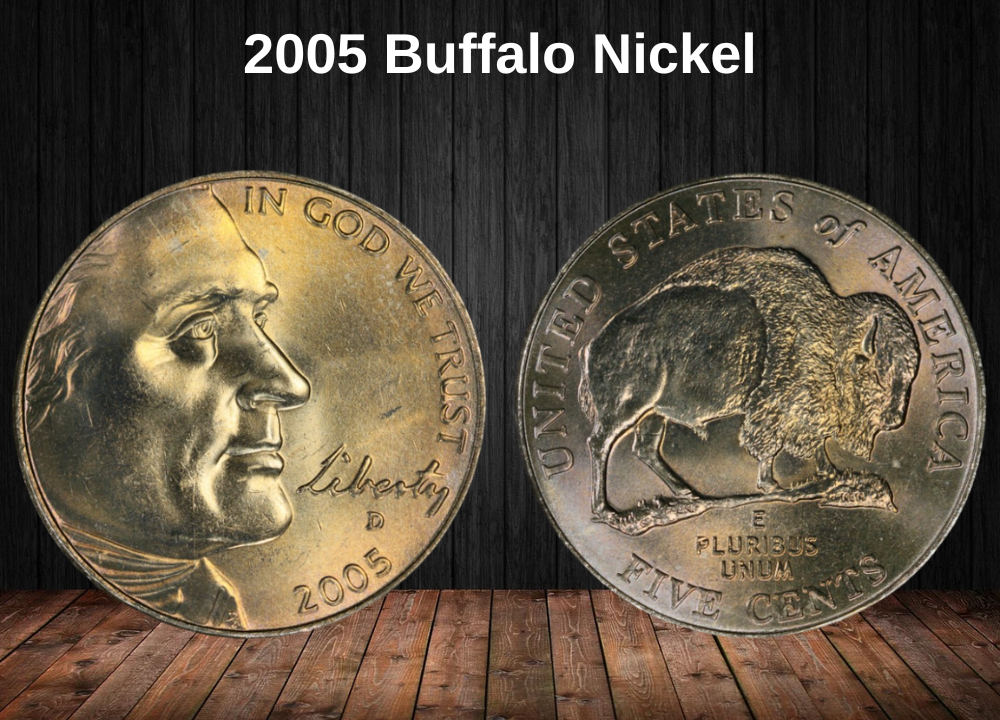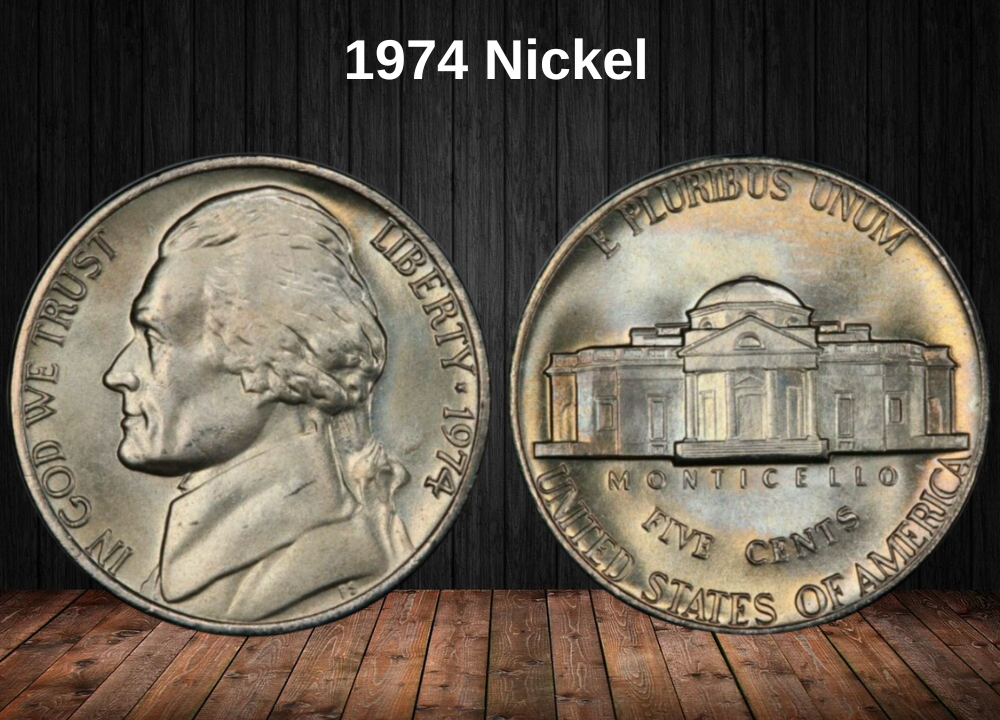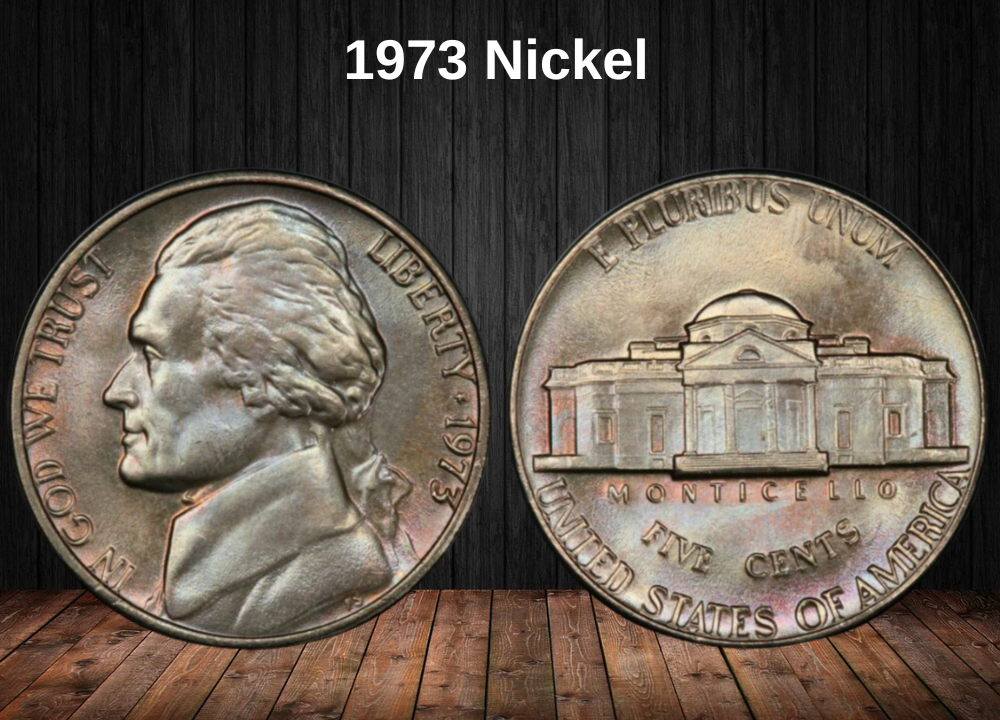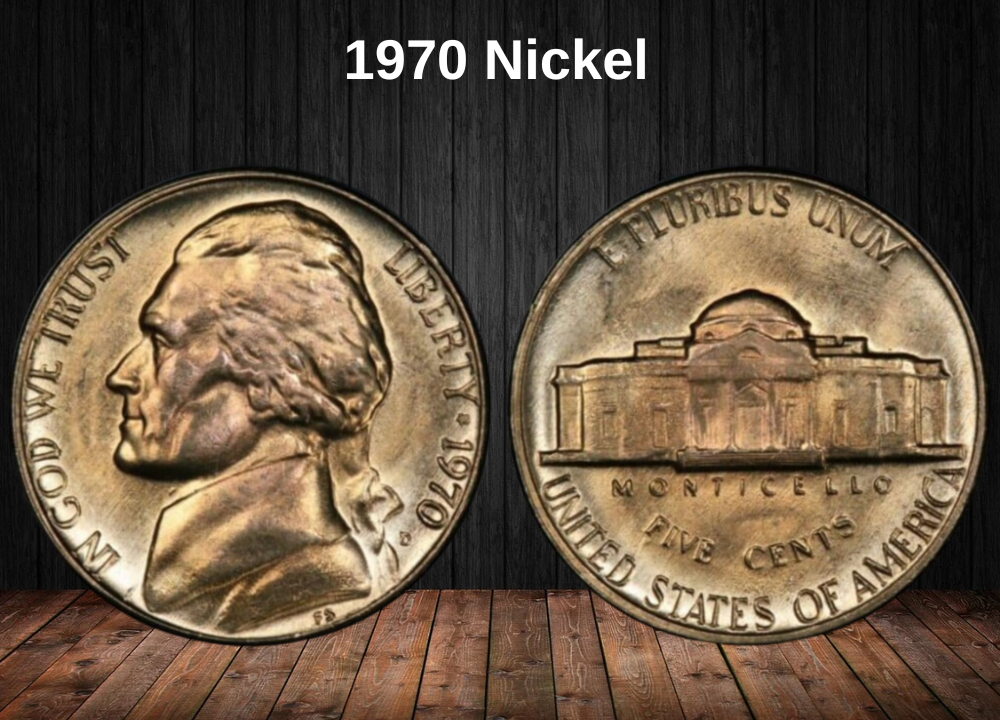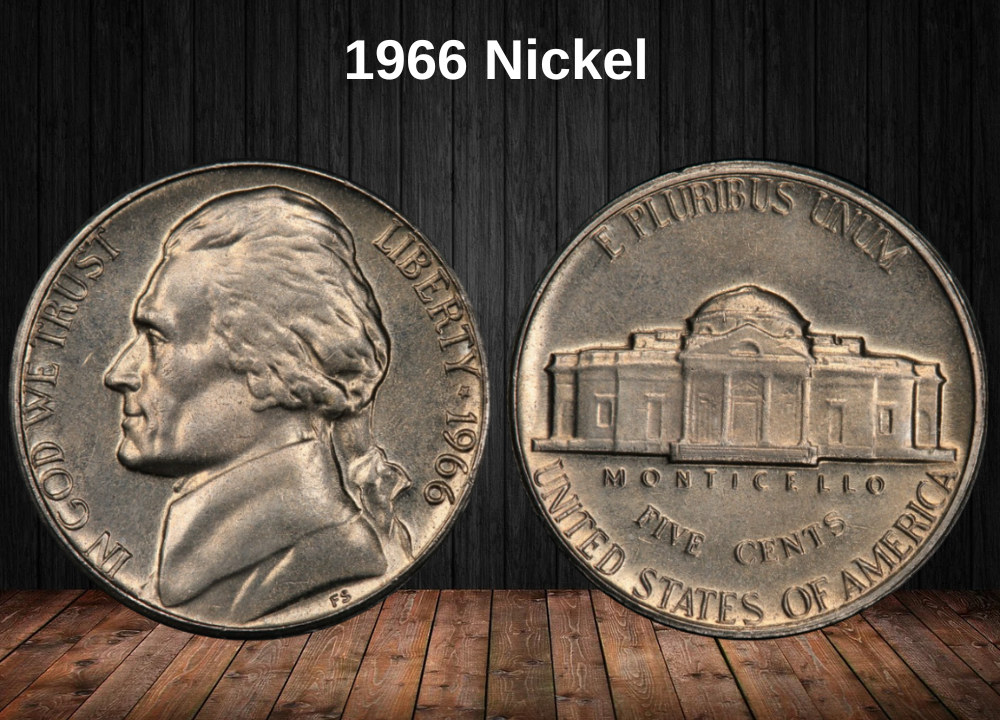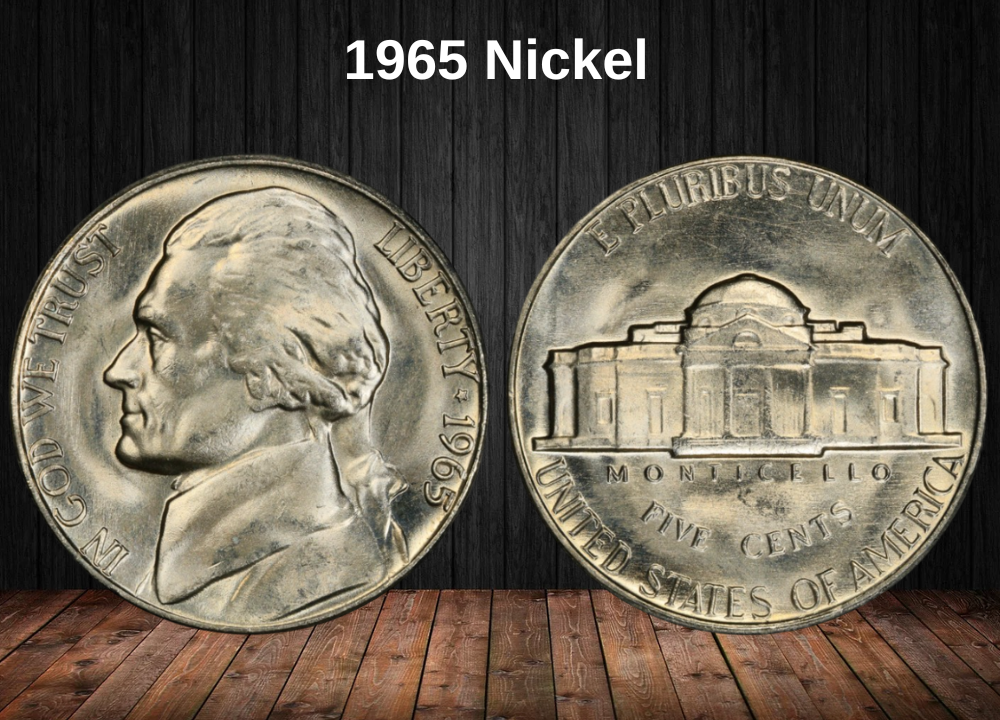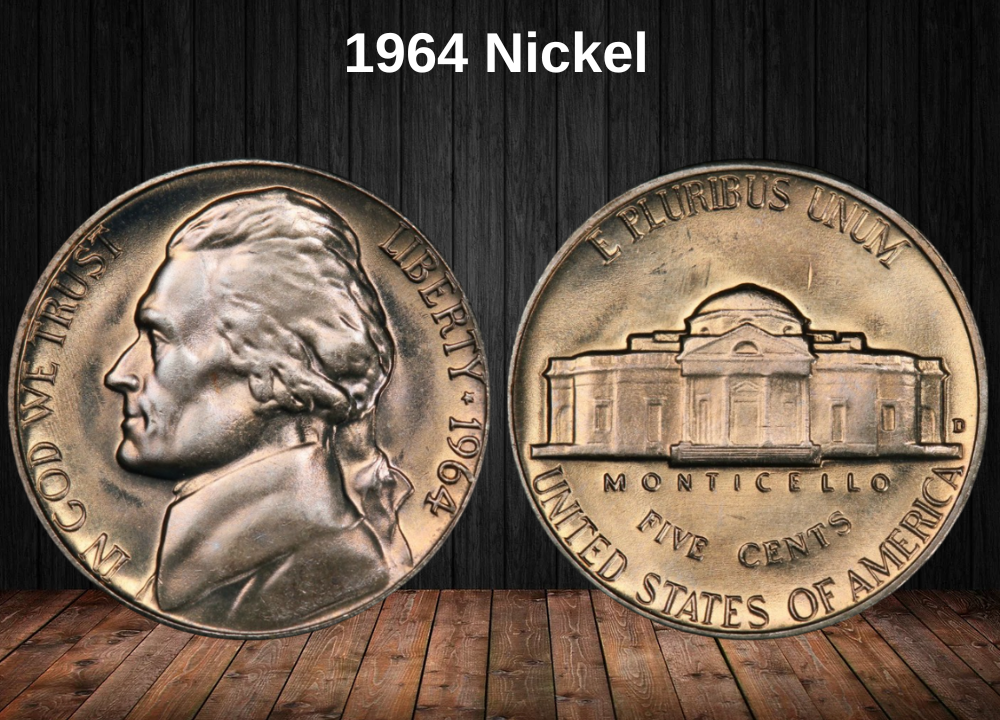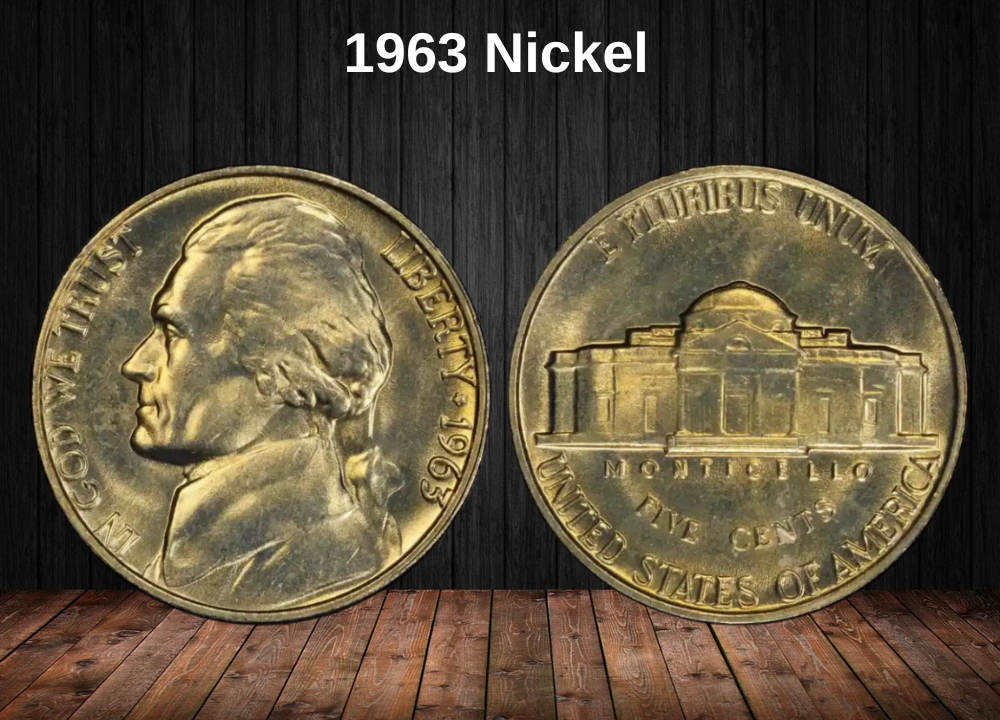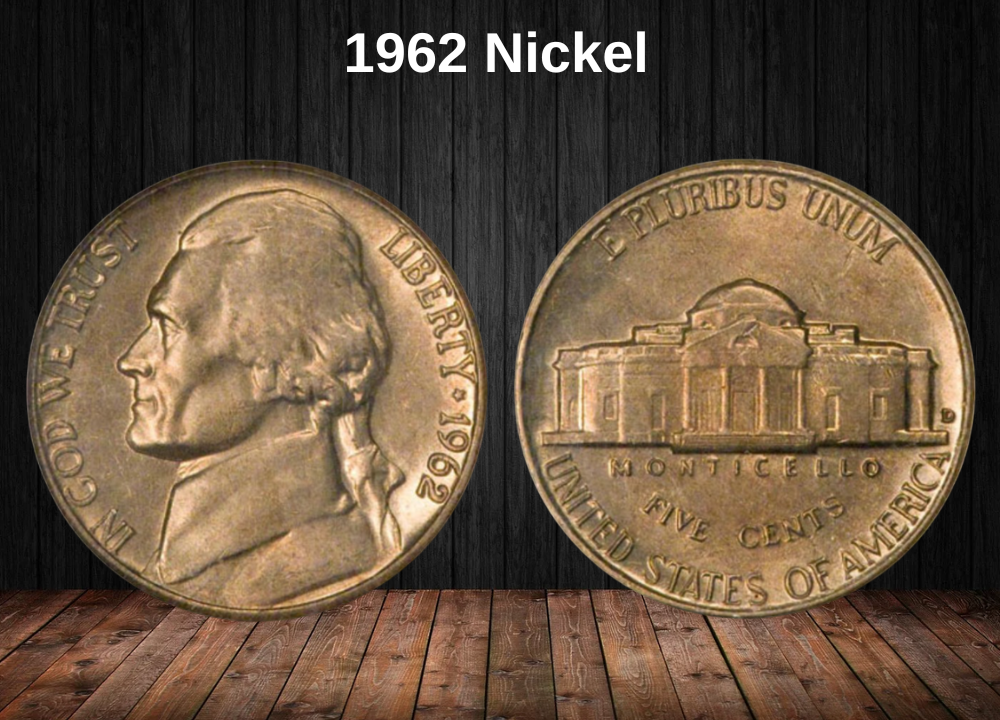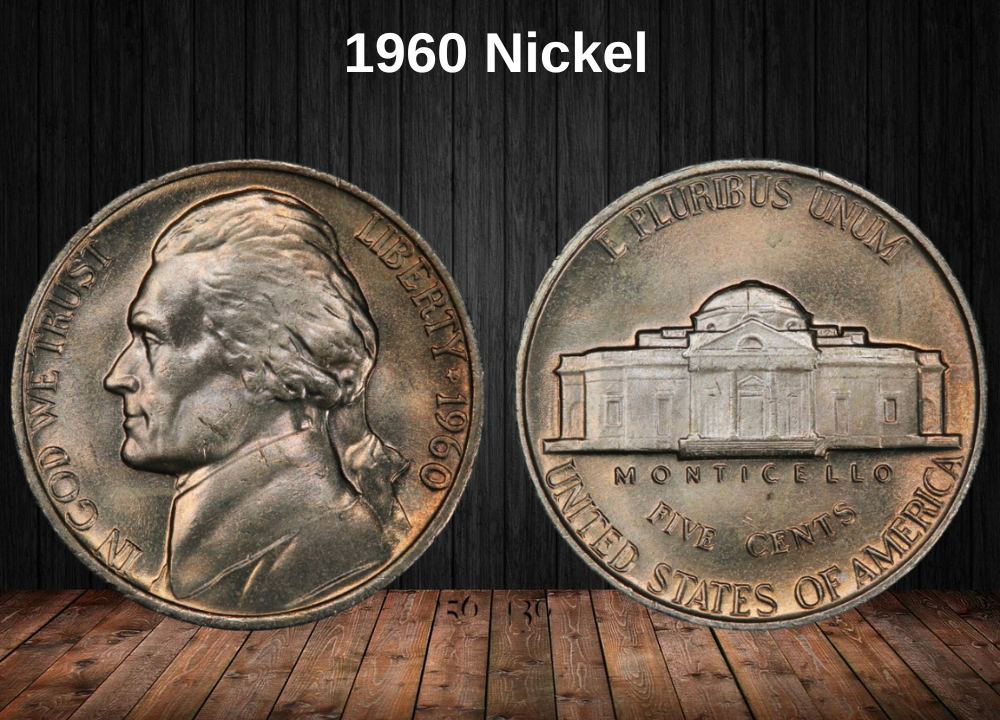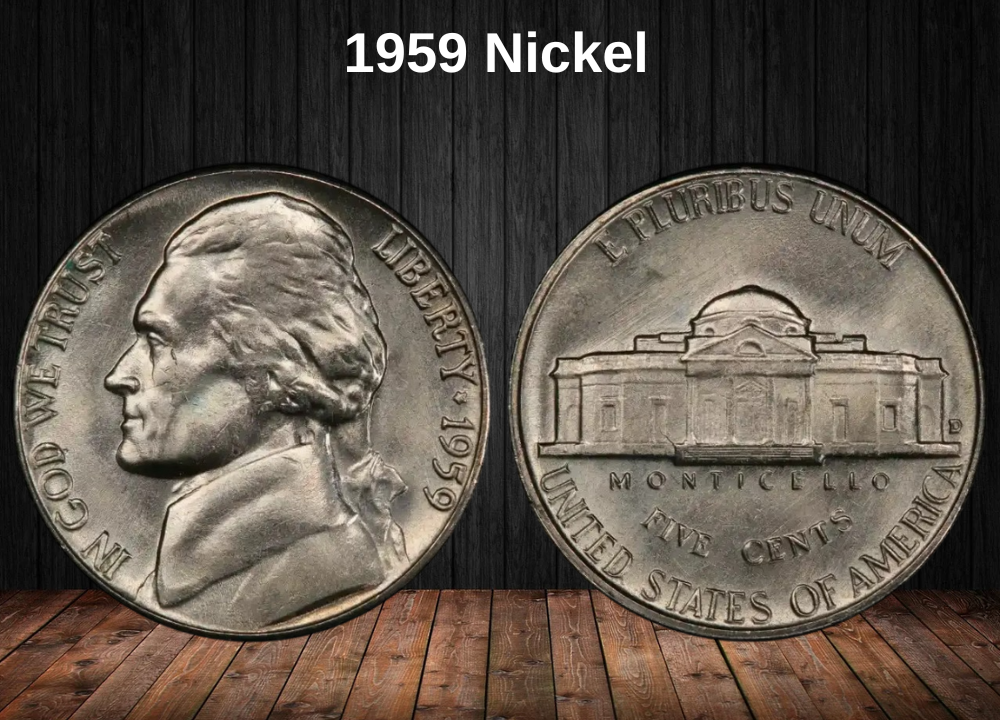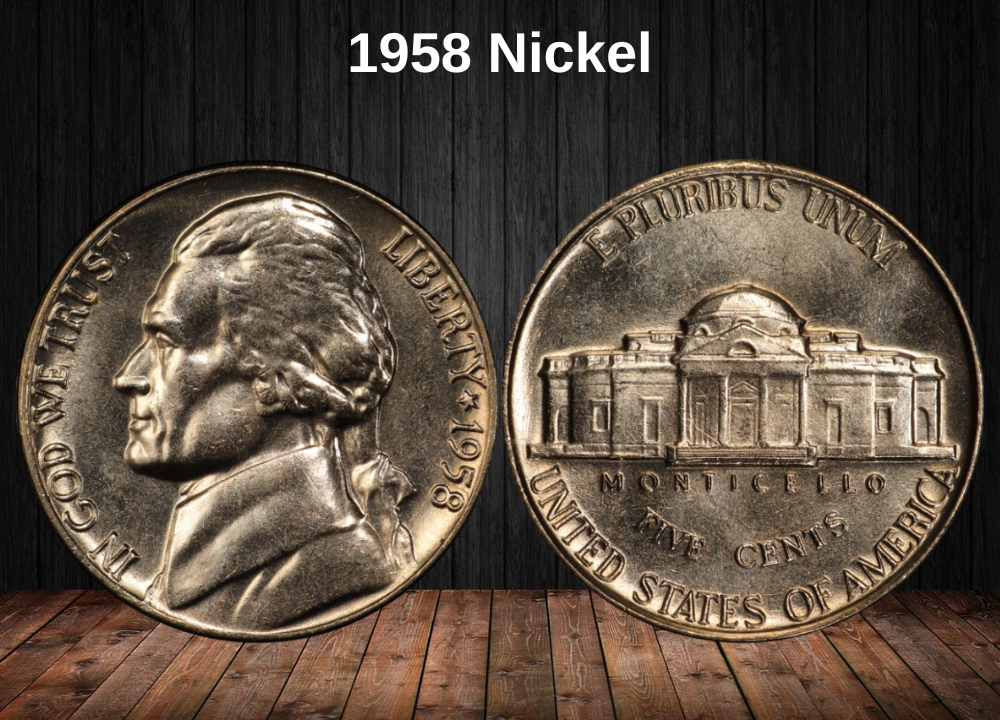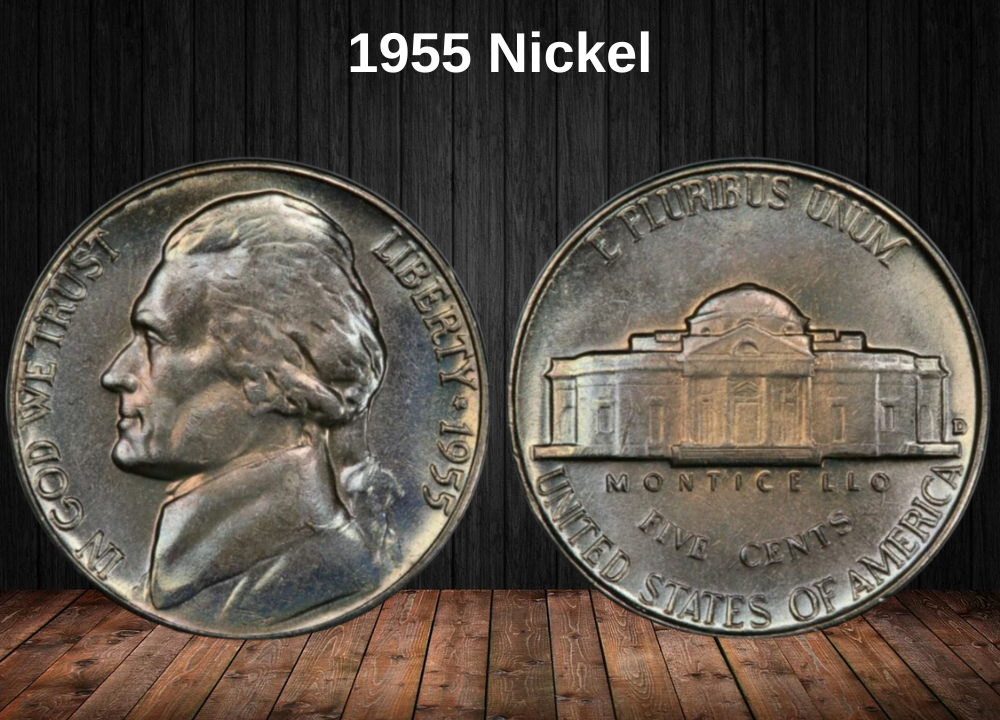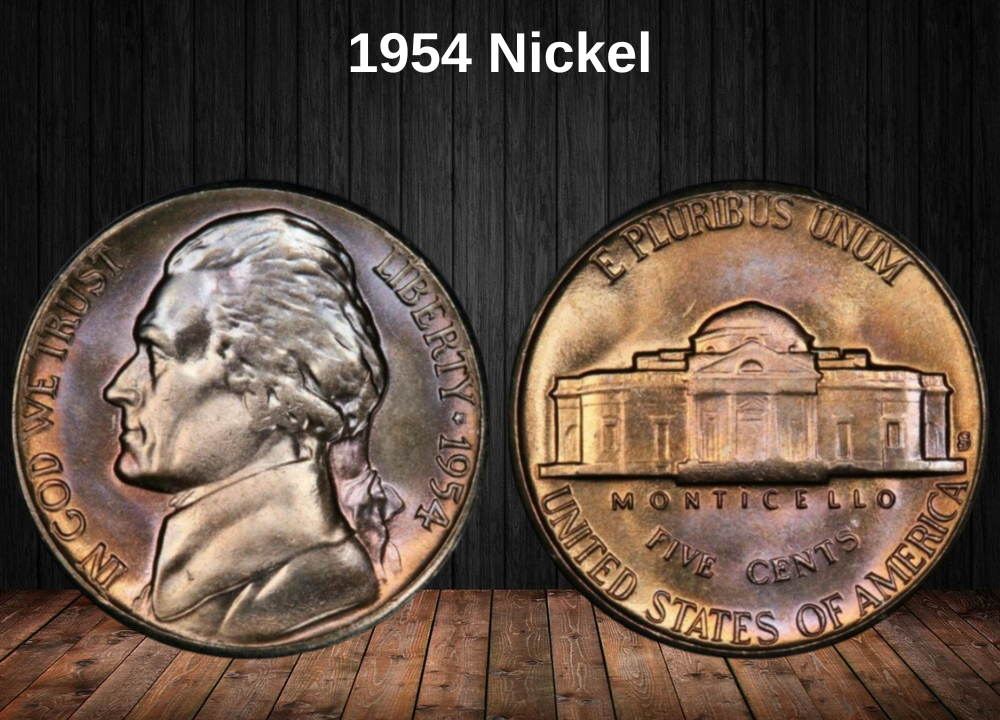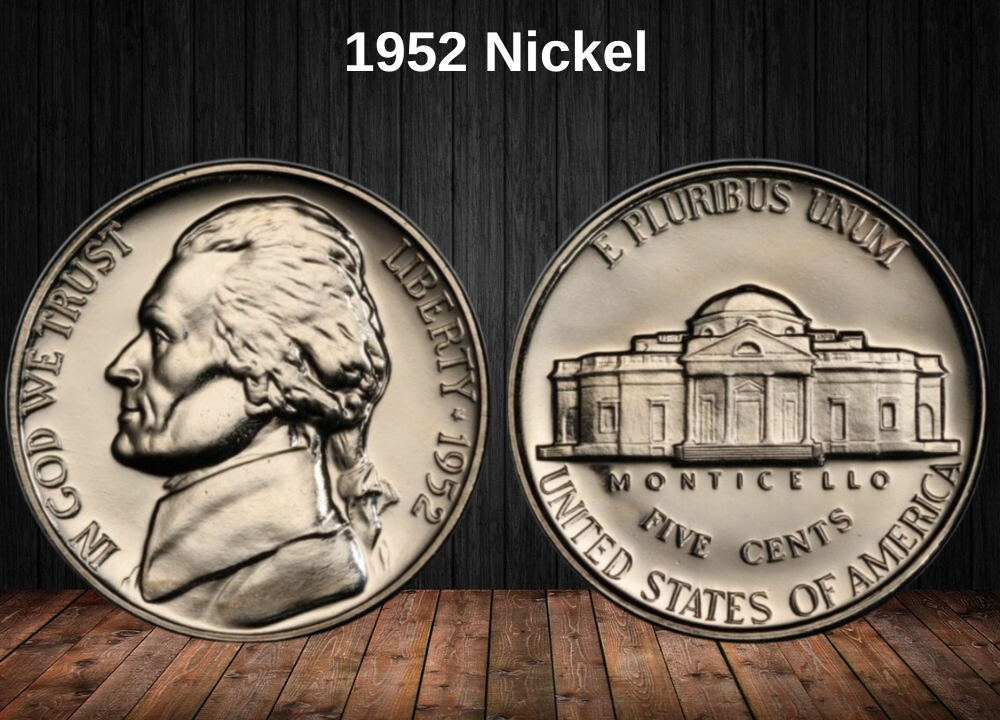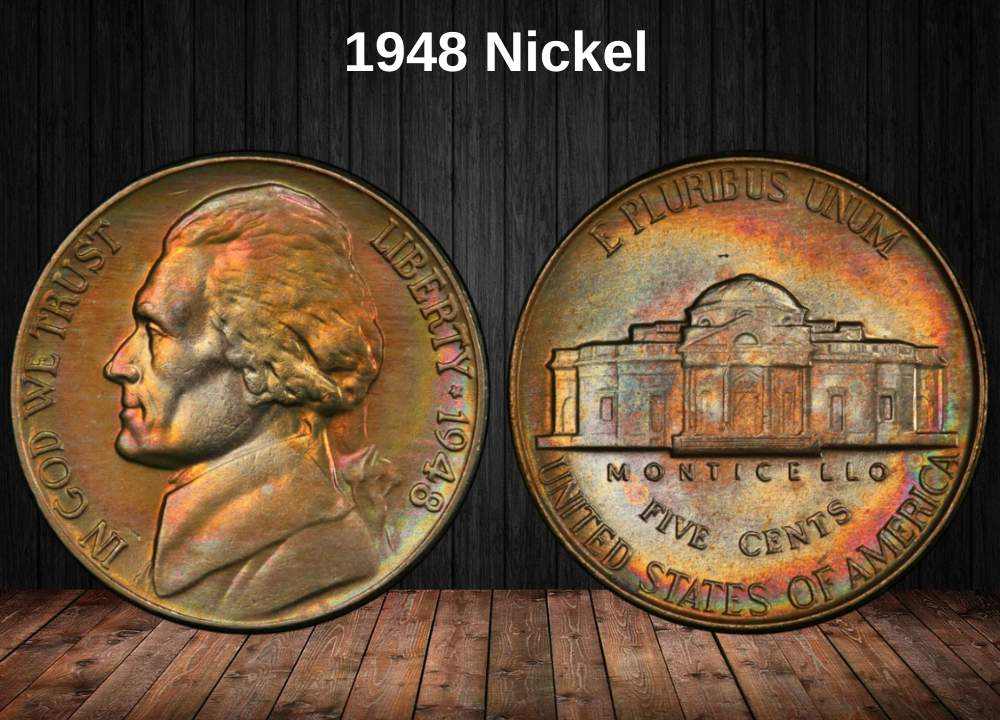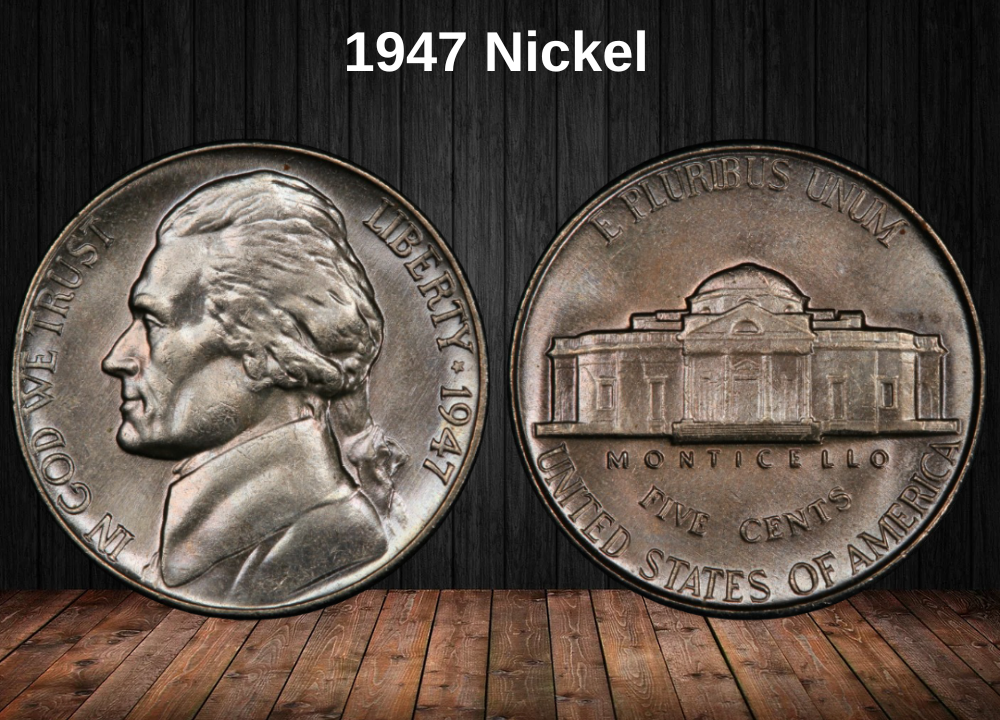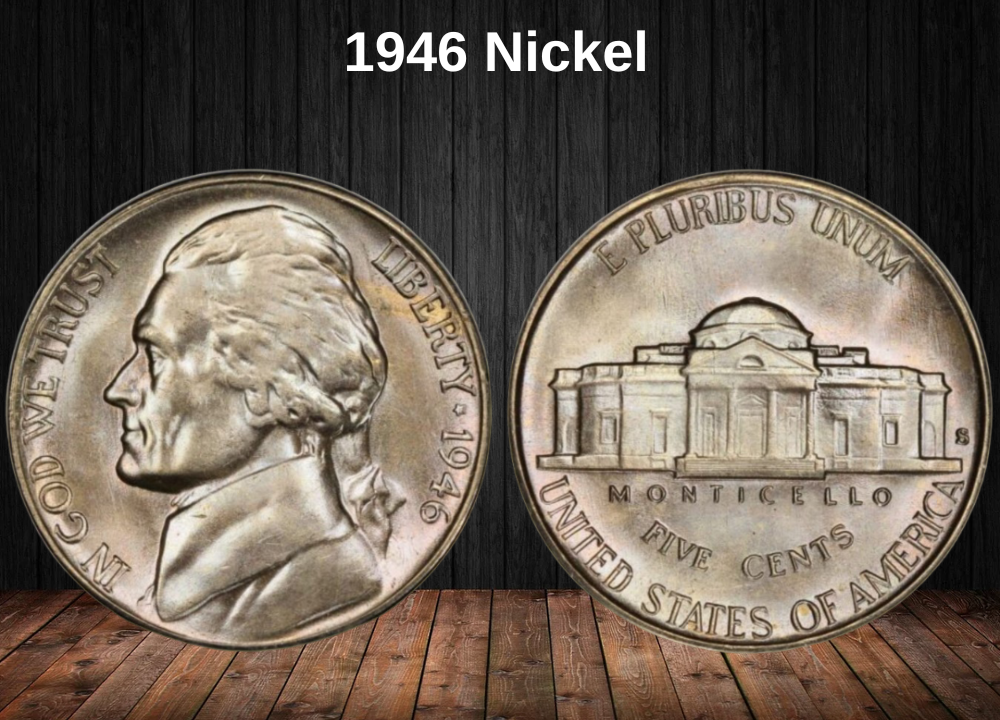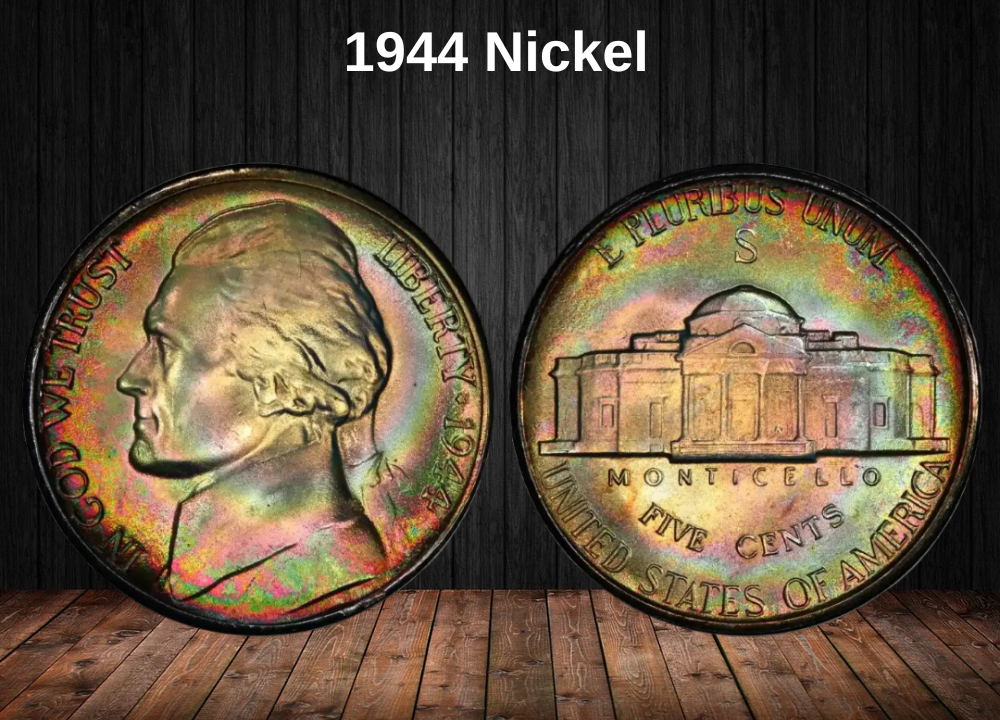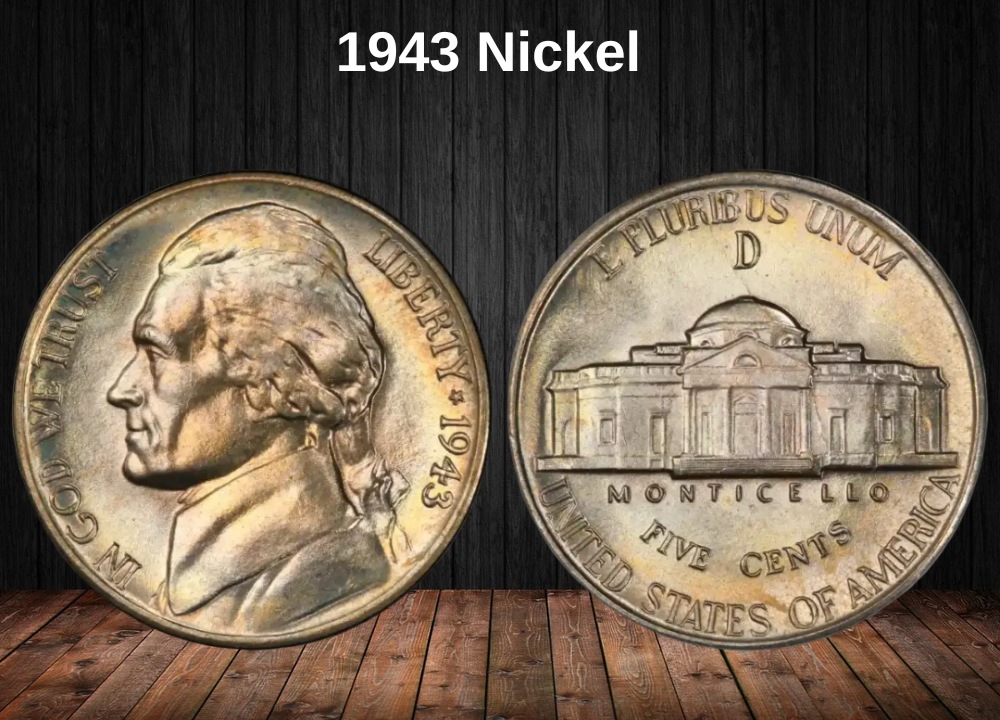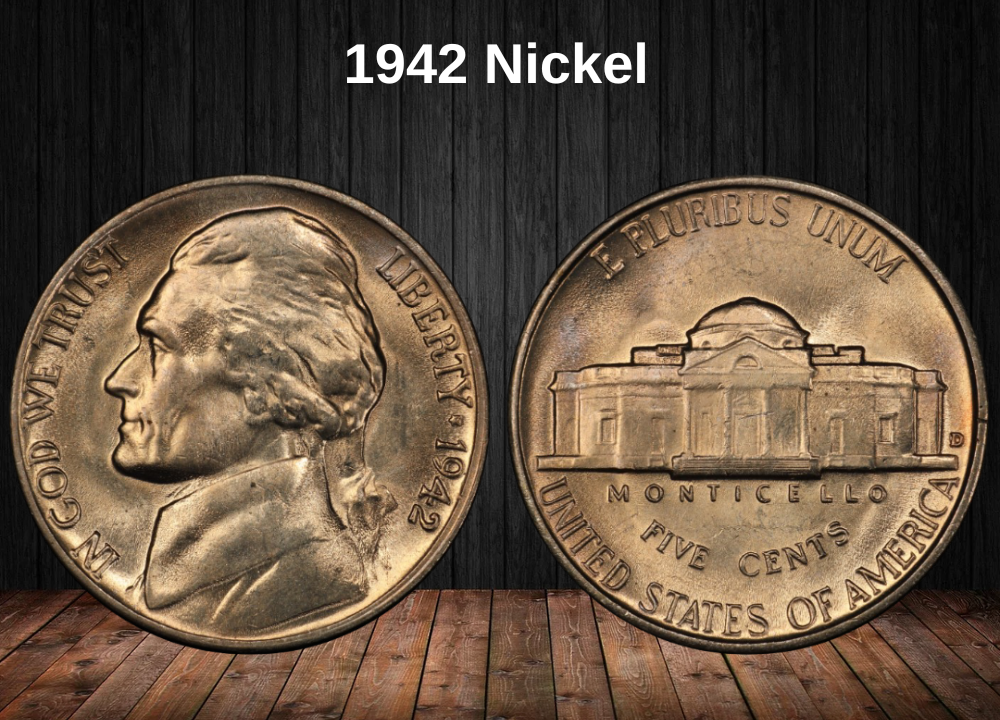Have you ever come across a 1957 nickel and wondered if it could be worth more than five cents?
Maybe you inherited a jar of coins, stumbled across one in your pocket change, or you’re already building a Jefferson nickel collection and want to know how this year fits in.
This comprehensive guide is written for two types of readers:
- Casual finders – People who have a 1957 nickel and want to know if it’s valuable or just worth keeping as a curiosity.
- Dedicated collectors – Numismatists seeking detailed insight into varieties, grading, and error types that can make this coin a hidden gem.
We’ll cover:
- Its historical background and design features
- How to identify and grade your coin
- Market values for different mint marks and conditions
- Rare errors and varieties worth a premium
- Where to sell your coin
Let’s dive in.
1957 Nickel Value Chart
Before we discuss the history and features, here’s a quick reference table showing approximate market values for the 1957 Jefferson nickel. These prices reflect recent auction trends and dealer listings.
| Variety | MS60 | MS62 | MS64 | MS66 | Notes |
|---|---|---|---|---|---|
| 1957 (No Mint Mark) | $2 | $3 | $10 | $35 | MS67 Full Steps can exceed $3,500 |
| 1957-D (Denver) | $2 | $3 | $10 | $30 | MS67 Full Steps reached $4,920 in 2024 |
| 1957 Proof (Philadelphia) | $6 | $6 | $8 | $15 | PF69 record sale: $2,450 |
💡 MS = Mint State (uncirculated), PF = Proof (special collector strike).
Values for circulated coins generally range from 10¢ to 20¢, unless they have rare features or errors.
The History of the 1957 Nickel
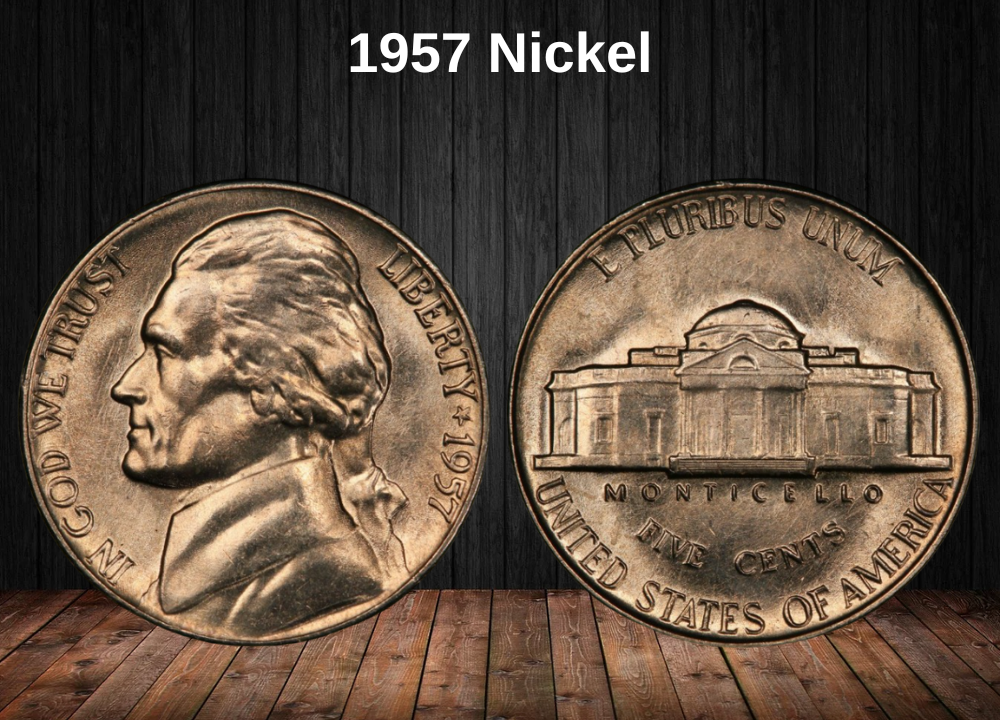
The 1957 nickel is part of the Thomas Jefferson nickel series, which began in 1938 to replace the Buffalo (Indian Head) nickel.
The End of the Buffalo Nickel
While the Buffalo nickel is beloved today for its bold design, it caused headaches for the U.S. Mint.
Its high relief points wore down the dies quickly, making production costly and inefficient.
After 25 years in circulation, the Mint could replace it without Congressional approval. In 1938, a public design competition was announced.
Felix Schlag’s Winning Design
German-born sculptor Felix Schlag won the contest with his portrait of Thomas Jefferson on the obverse and Jefferson’s home, Monticello, on the reverse.
- Original Monticello design was angled, but the Mint requested a straight-on view.
- The Commission of Fine Arts had reservations about the final layout, but the Mint proceeded regardless.
Production in 1957
By 1957, the Jefferson nickel had been in use for nearly two decades with minimal design changes.
That year, only two mints produced the coin:
- Philadelphia: No mint mark, produced regular strikes and proofs.
- Denver: Mint mark “D,” largest mintage.
Special feature – In 1957 and 1958 only, the star between “LIBERTY” and the date was enlarged, engraved by hand, making these years a bit unique.
The Features of the 1957 Nickel
The Obverse of the 1957 Nickel
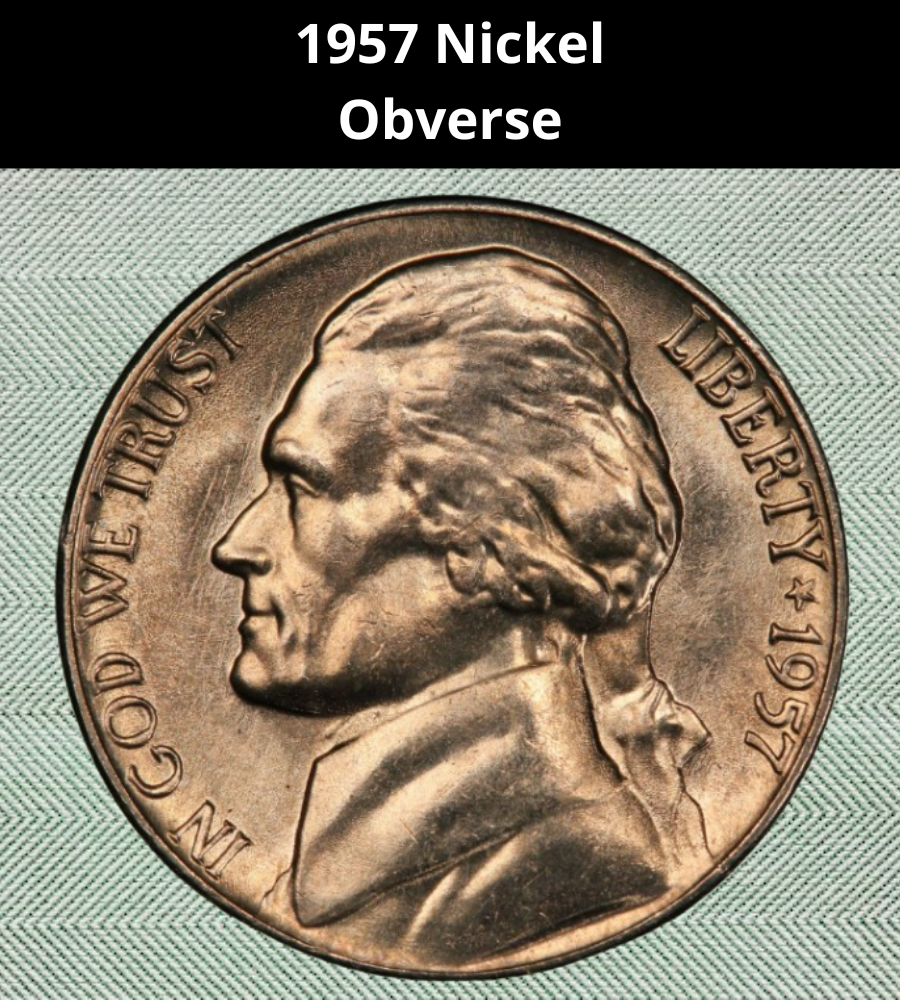
- Portrait of Thomas Jefferson, facing left.
- Hair tied back in a low ponytail, wearing a high-collared coat.
- IN GOD WE TRUST along the left rim.
- LIBERTY and the date “1957” on the right, separated by a five-pointed star.
- On 1957 issues, the star is larger than on most other years.
The Reverse of the 1957 Nickel
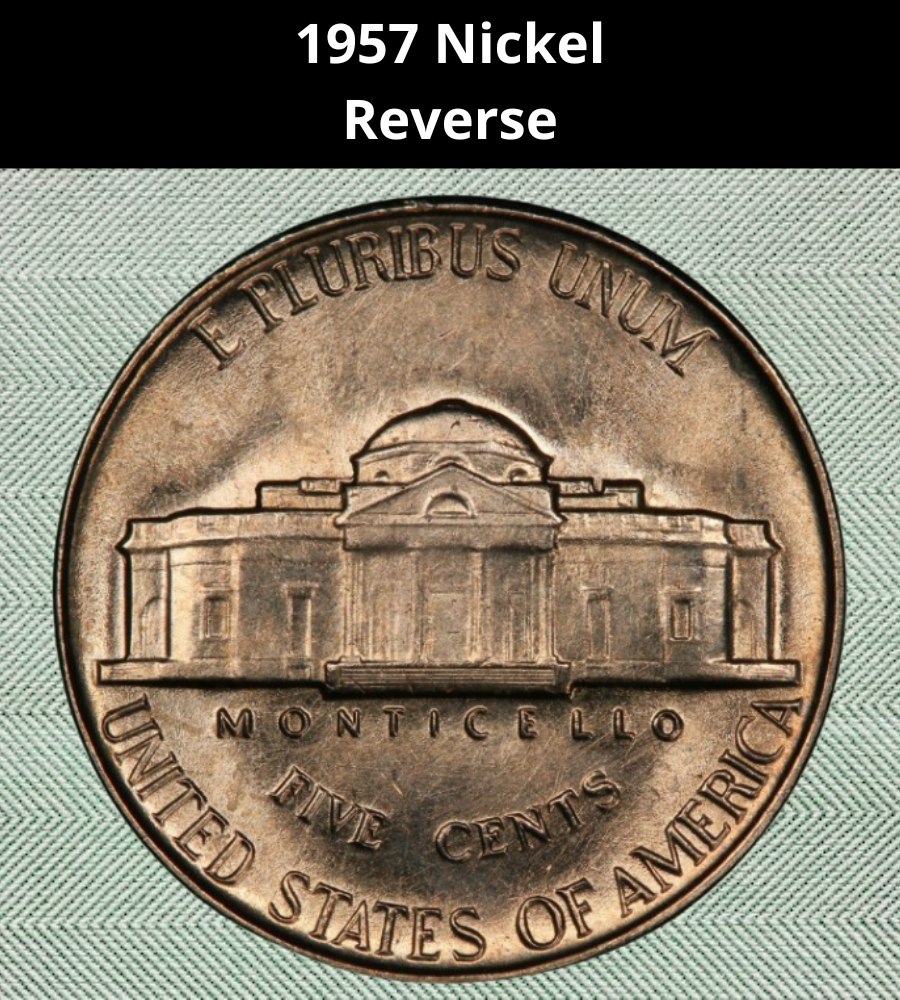
- Straight-on depiction of Monticello, Jefferson’s Virginia estate.
- Steps leading up to the entrance – the sharpness of these steps is critical for collectors (more on “Full Steps” later).
- “MONTICELLO” inscribed under the building.
- Denomination “FIVE CENTS” below, and “UNITED STATES OF AMERICA” along the lower rim.
- Motto E PLURIBUS UNUM at the top.
Other Features
- Diameter: 21.2 mm
- Weight: 5.00 grams
- Composition: 75% copper, 25% nickel (no silver)
- Edge: Plain (smooth)
Mint Mark Locations
- 1957-D: “D” mint mark appears on the reverse, to the right of Monticello.
- 1957 (Philadelphia): No mint mark.
1957 Nickel Grading
Condition is one of the most important factors in determining value. Grading ranges from Basal State-1 (almost unrecognizable) to Mint State-70 (perfect).
Circulated vs. Uncirculated
- Circulated coins: Show wear, dullness, and flattened details. Usually worth only face value unless an error is present.
- Uncirculated coins: Retain full mint luster with no wear on high points like Jefferson’s cheekbone or Monticello’s steps.
Key High Points to Check
- Obverse: Brow above Jefferson’s eye, cheekbone, and hairline.
- Reverse: Roof triangles of Monticello, columns, and most importantly, the steps.
Full Steps (FS): Coins showing all 5 or 6 steps sharply defined are significantly more valuable.
1957 Nickel Value Guides
1957 No-Mint Mark Nickel (Philadelphia)
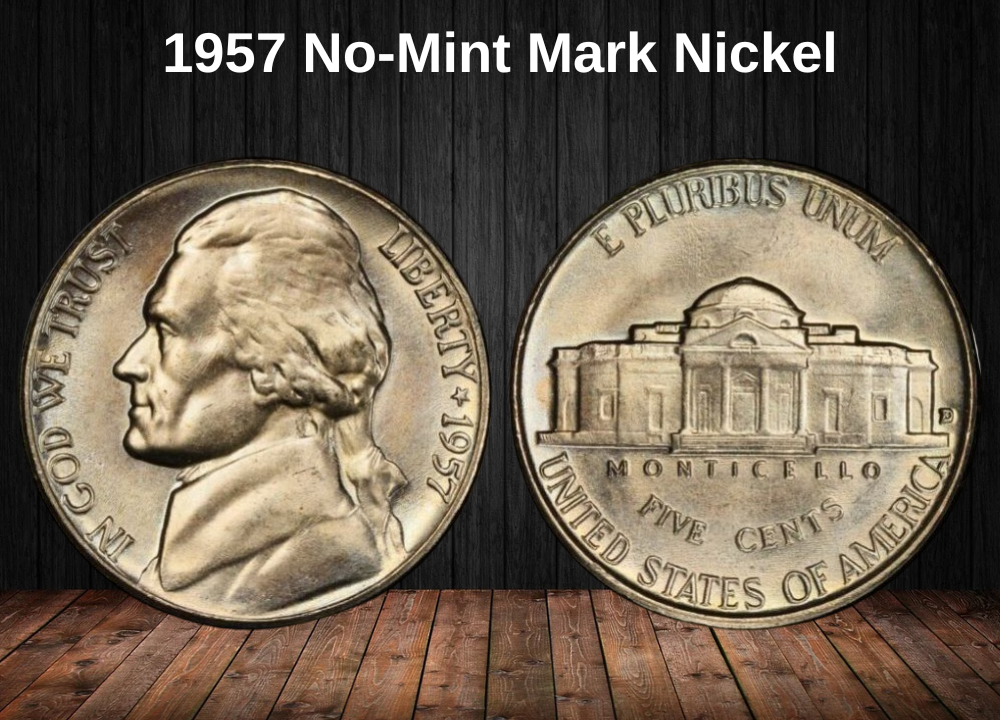
- Mintage: 38,400,000
- Typically weak strikes with duller planchets.
- Circulated: 10¢–20¢
- MS65: Around $22
- MS67: $500+ (without Full Steps)
- MS67 Full Steps: Up to $3,500
- Auction Record: $4,313 (Heritage Auctions, 2006)
1957-D Nickel (Denver)

- Mintage: 136,828,900
- Common, but many suffer from die erosion.
- Circulated: 10¢–20¢
- MS65: Around $20
- MS67: $250
- Full Steps MS67: Sold for $4,920 (2024)
1957 Proof Nickel (Philadelphia)
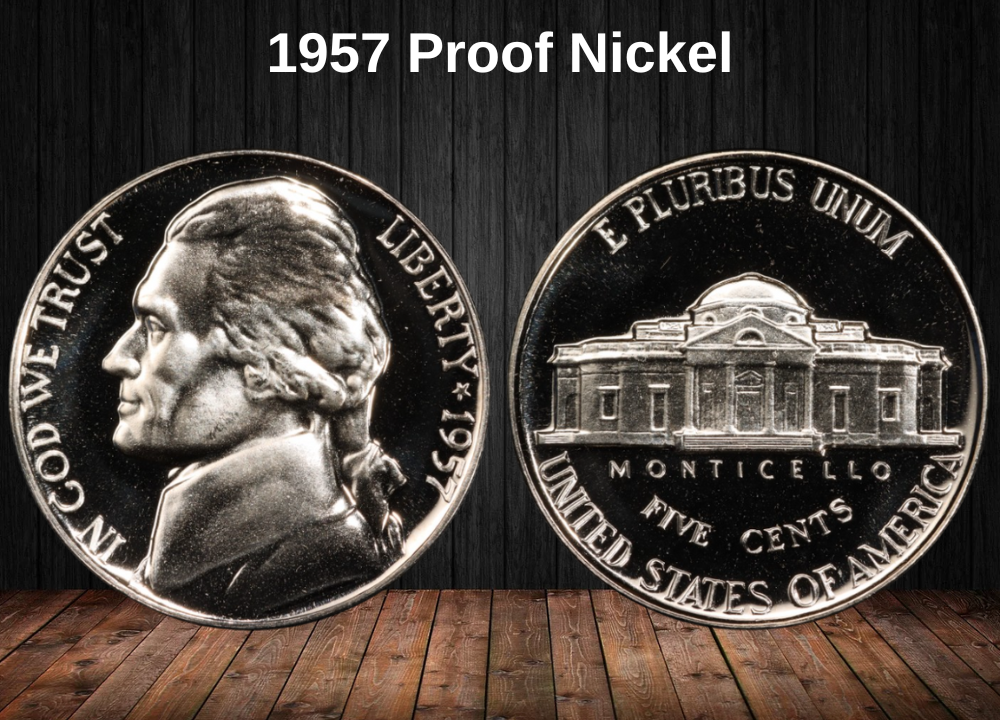
- Mintage: 1,247,952
- Struck for collectors with mirror-like surfaces.
- Common up to PF67.
- PF67: $20
- PF69: Record $2,450 (eBay, 2019)
- Ultra Cameo proofs are rare and highly sought after.
Rare 1957 Nickel Errors List
Error coins can sometimes bring higher prices than standard high-grade coins.
1957 Full-Steps Nickel (Not a Mint Error but a Variety)
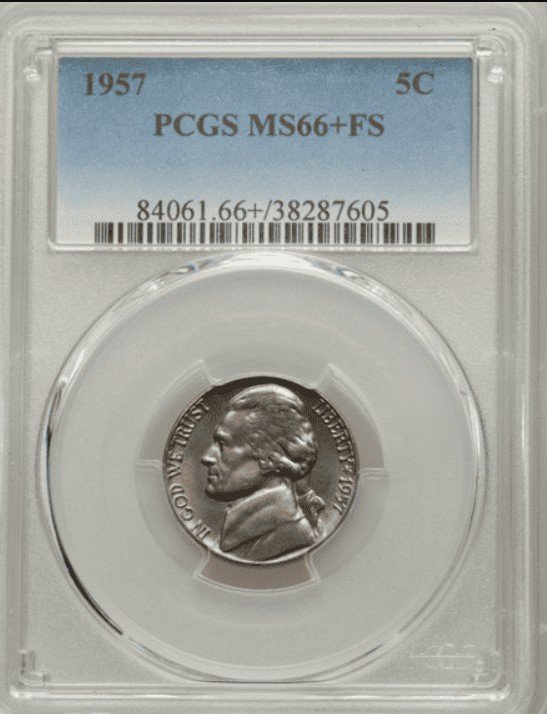
- Requires all steps on Monticello to be visible and sharply struck.
- MS66–MS67 FS can fetch hundreds or thousands.
- Record sales: $4,303 for a 1957 FS (PCGS, 2006).
1957 Re-Punched Mint Mark (RPM)
- Found on 1957-D coins.
- Secondary “D” punched over the first.
- Value: $15–$50 depending on visibility.
1957 Doubled Die
- Doubling seen on inscriptions like “FIVE CENTS” or “MONTICELLO.”
- Obverse doubling may appear under Jefferson’s eye.
- Value: $10–$50 for strong examples.
1957 Off-Center Strike
- Caused by misaligned planchet during striking.
- Slight (2–5% off): ~$5
- Dramatic (50%+ off): $50+
Where to Sell Your 1957 Nickel
Where to sell your nickel?
Now that you’re aware of your nickel’s value, you may be curious about the best places to sell it. Don’t worry: here’s a rundown of some top online marketplaces where you can conveniently sell your nickels, along with their benefits and drawbacks.
Explore the best platforms for selling nickels online (advantages and disadvantages).
8. FAQs
Q: What makes the 1957 nickel special?
A: The larger star between “LIBERTY” and the date (1957–1958 only) and the potential for Full Steps in high grades.
Q: Where is the mint mark on a 1957 nickel?
A: On 1957-D coins, it’s on the reverse to the right of Monticello. Philadelphia coins have no mint mark.
Q: Does the 1957 nickel contain silver?
A: No. Composition is 75% copper, 25% nickel.
Final Tip for Collectors:
While most 1957 nickels are worth only a few cents, condition and strike quality are everything. A sharp, well-preserved Full Steps coin can turn an everyday nickel into a four-figure treasure.

